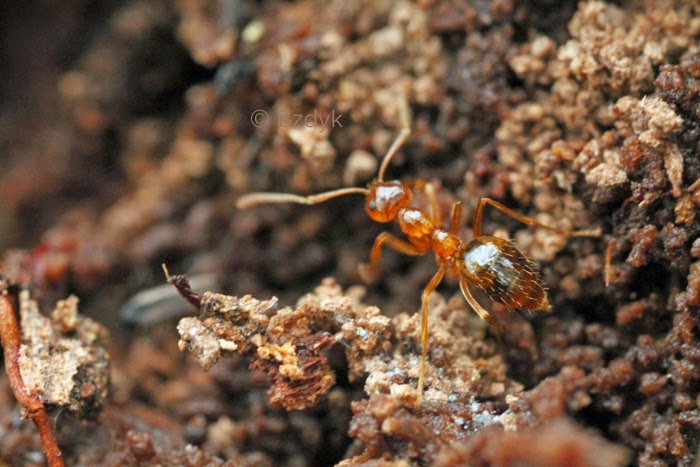Kick over a few rotten logs and sift through the leaf litter, here are some of the tiny things you may find!
Tiny spider. Note the eight eyes.
Very red centipede! Strigamia sp.
A mite. Some mites are predatory and feed on other mites.
An earthworm. Many species of earthworm are invasive nonnatives, hailing from Europe and Asia and are changing the nutrient cycles in many soil habitats.
Springtails! I posted about these non-insect hexapods earlier this winter.
An ant, foraging slowly in the colder weather. She's about to encounter a springtail, the blurry white figure to the lower left.
A bristletail, order Archaeognatha. These are some of the most unchanged "primitive" insects, appearing in the Devonian period. They can use their tails to leap much like a springtail. They eat algae, moss, lichens or rotten organic material.
Cricket nymph. This little guy must grow and molt several more times before he becomes an adult.
Opiliones nymph (baby harvestman/daddy longlegs) That's my guess anyway!
A millipede coiled up for safety.
Here's a link to an article I wrote for Habitat Herald about leaf litter:















.jpg)

















